Pest Library
Welcome to Our Pest Library
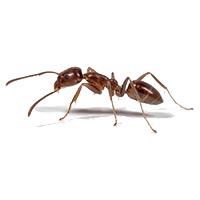
Argentine Ants
Argentine Ants range from light to dark brown and are about 1/8 of an inch long. They are highly attracted to water and sweets, and prefer to nest under buildings and along sidewalks or anywhere else near water and food—preferably sweet food such as fruit, syrup, sugar, and juice.
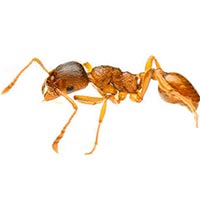
Pharaoh Ants
Pharaoh Ants are very small, about 1/12 to 1/8 of an inch long, and have light yellow bodies with red and black markings on their abdomens. They prefer to nest in warmer areas near open sources of water such as kitchens. Pharaoh Ants will eat all types of food including other insects.
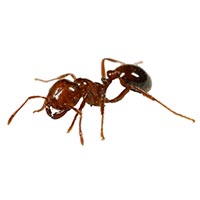
Imported Fire Ants
Imported Fire Ants are red in color and can get quite large for an ant—they usually range from 1/16 of an inch to almost 1/2 inch. Imported Fire Ants prefer warm and sunny climates, and their nesting areas can be identified as mounds in the soil. Imported Fire ants eat both animal and vegetable sources of food including other insects, human food, and vegetables. Imported Fire Ants are not native to North America, but were accidentally imported sometime in the 1930s. They are quite an aggressive ant species that bite humans and other animals. Their bites can be quite painful for humans and in certain rare circumstances, even fatal. If evidence of an Important Fire Ant mound is found, you should not disturb it but contact a local pest control professional right away, such as OnSite Pest Management.
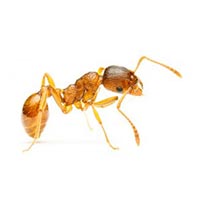
Thief Ants
Thief Ants are the smallest of household ants and range from 1/25 to 1/15 of an inch long. They vary in color, from yellow to dirty brown. Thief Ants prefer to nest in cracks and crevices in walls, cabinets, or under flooring. They also nest in outdoor locations such as under rocks. They prefer proteins and greasy food. The Thief Ant is a persistent little ant and can be difficult to control.
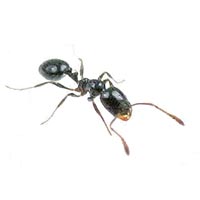
Little Black Ants
Little Black Ants are jet black in color and are also quite small at about 1/15 of an inch long. They usually nest outdoors in open soil or underneath objects such as rotting wood. Little Black Ants usually feed on plant secretions and honeydew of aphids, but will also scavenge for food indoors such as meats and sweets.
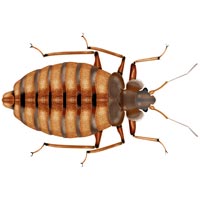
Bed Bugs
Bed Bugs are becoming an increasing problem in large cities. Beg Bugs are blood-feeding bugs, with the Common Bed Bug (Cimex Lectularius Linnaeus) being the most common type of Bed Bug in Northern America and Europe.
Adult Bed Bugs are about the size of an apple seed and are reddish-brown in color. Baby Bed Bugs, known as nymphs, are white and usually cannot be seen with the naked eye. Bed Bugs normally hide in bedroom furniture, specifically in the lining of mattresses and in the cracks and crevices of headboards, bedframes, chest of drawers and other furniture. Bed bugs can also be found in other areas including behind electrical outlets, in sofas, picture frames, and cracks in baseboards.
Bed Bugs are most active at night. While host humans are sleeping, the Bed Bugs and their nymphs come out from hiding and suck the blood from their hosts. Humans don’t usually feel the bites while they are happening because the Bed Bugs inject an anesthetic before biting, so the human will remain asleep and unaware while the Bed Bug drinks up to three times its weight in blood.
Clues of Bed Bugs infestations include bites on your body that look like small, red welts, and dark spotting on mattresses and bedding, which indicate Bed Bug secretions. Bed Bugs infestations usually occur when humans come into contact with infestations through hotels, motels, hospitals, or even on airplanes and in luggage. Buying used furniture and bedding can also increase the risk of infestation.
Bed Bugs can be tough little critters, the adult Bed Bug can survive over a year without feeding, and their nymphs can survive between nine months to a year without feeding. Bed Bug infestations should always be handled by a professional. If you suspect your home or business may have a Bed Bug infestation, do not hesitate to contact OnSite Pest Management right away to discuss your options and pricing for dealing with Bed Bugs.

Bees
The most commonly encountered Bees in Southern California are the Domestic and Africanized Honey Bees.
Domestic Honey Bees are yellow with brown and black markings and are about 2/3 of an inch long. Domestic Honey Bees like build their hives in walls of structures or under eaves of houses. A Honey Bee’s hive looks like a mass of honeycombs clumped together and will usually be surrounded by Honey Bees. When disturbed, Honey Bees will sting.
Africanized Honey Bees appear similar to Domestic Honey Bees, but are smaller and more aggressive. Also known as “Killer Bees,” Africanized Honey Bees often become aggressive when humans or animals come within 100 feet of their hives. Africanized Honey Bees will attack in large numbers and are more persistent in their attacks. Some attacks have resulted in death.
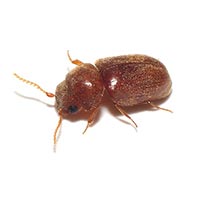
Drug Store Beetles
The Drug Store Beetle is small (1/8 of an inch) brown, circular in shape, and has wings. Adult Drug Store Beetles can fly and are attracted to light. The Drug Store Beetle likes to infest stored foods such as flour, cereal, and grains. It will also infest nonfood products such as paper goods, cardboard, fur, and leather.
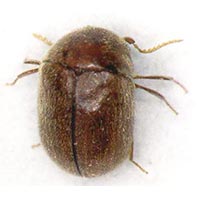
Cigarette Beetles
The Cigarette Beetle can also fly like the Drug Store Beetle, and are light brown and about 1/8 of an inch long. The Cigarette Beetle likes to infest stored tobacco, but will also infest food and nonfood stored goods, such as pet food, cereal and pasta as well as books, leather and silk.
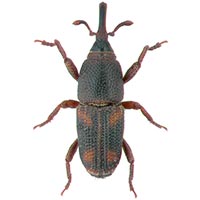
Rice Weevils
The Rice Weevil, also known as the Black Weevil, is one of the peskier beetles of the Pantry Pests, and will infest grains both in the field and in storage. Adult Rice Weevils are reddish brown, with red or yellow spots on its wings, and about 1/8 of an inch long. The Rice Weevil prefers to infest grain and seeds, but has been known to infest pasta and flour as well.
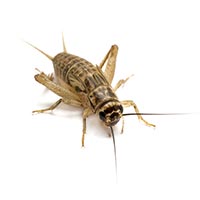
House Crickets
The House Cricket normally lives outdoors but may invade structures. Home Crickets are about 3/4 of an inch long and are light yellowish-brown with long antennas. Home Crickets chew on linens such as silk and wool, and also will eat fruits, vegetables, and paper. They are most active at night and can be heard by their distinct chirping.
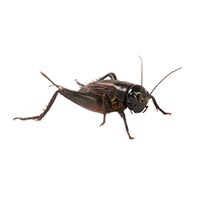
Field Crickets
Field Crickets normally live outdoors and feed on plant organics and soils. However they have been known to invade homes and structures. Field Crickets are larger than House Crickets, with wings, and range from dark brown, gray, or black in color.
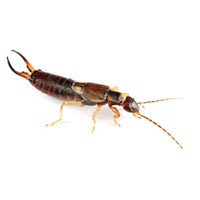
Earwigs
Despite their name, Earwigs do not burrow in the ears of humans. Earwigs can be spotted by their distinct pincers on the back of their abdomens, and range from about 5/8 of an inch to 1/2 of an inch long. They come in different colors, such as dark reddish-brown, yellowish-brown, dark brown, and black.
Earwigs like to hide in dark and moist places both indoors and outdoors and are most active at night. They are often spotted in areas near water such as bathrooms, kitchens, and laundry rooms. Earwigs prefer to eat green plants. They may pinch with their pincers if disturbed.
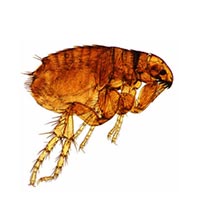
Fleas
The most commonly encountered flea in Southern California is the Cat Flea. Like the Bed Bug, the Cat Flea is also a blood-feeding pest. Despite their name, Cat Fleas bite and suck the blood of humans, dogs, cats and even other animals such as rodents and livestock. They are a very small insect that average from about 1/25 to 1/16 of an inch long and are usually black or dark brown.
Cat Fleas prefer to live in areas near live hosts such as in bedding, sand (such as in playgrounds) and any other areas pets like to be. Cat Fleas lay their eggs on hosts and in bedding, but their eggs can fall off and hatch in other places. Cat Fleas prefer warm and humid climates because their eggs hatch faster in these climates.

Mice
After humans, the House Mouse is the most common mammal in the world, and is the world’s most commonly encountered rodent pest. The House Mouse is usually light gray or brown with a white belly and is about 5 inches long including its tail. The House Mouse can generally survive anywhere humans can but they prefer to hide indoors in colder climates or during winter months. The House Mouse prefers to feed on nuts and seeds but will eat almost anything it can scavenge such as pet food, food in pantries, and food in the garbage.
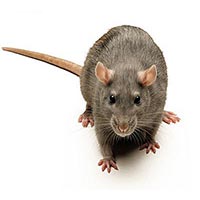
Rats
The most commonly encountered rat in Southern California is the Roof Rat. Roof Rats are black or brown and are larger than mice at 6 to 10 inches long, and has a tail longer than its body. Their long tails help with balancing—Roof Rats are agile climbers and prefer to nest in high places such as in walls, attics, and trees. They often enter buildings through trees and utility lines.
Roof Rats prefer berries, nuts, seeds, and fruits, but will also eat insects including slugs and snails. They will also scavenge human and pet food. Roof Rat infestations can cause damage to homes and buildings by gnawing on wooden structures and wires. They are also highly unsanitary creatures and carry diseases such as Rat Fever—an illness that can be contacted from a rat bite—or the Bubonic Plague or Black Death which wiped out millions of people in Europe during the Middle Ages. Rat urine can contaminate food at home or restaurants, causing food poisoning.
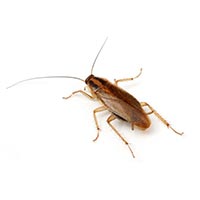
German Roaches
German Roaches are 1/3 of an inch long, brown, and the female roaches carry two panels of eggs on their sides. German Roaches have wings, but they hardly fly and prefer to run. German Roaches prefer to live indoors near heat sources such as behind refrigerators, ovens, and electrical sockets. They are good scavengers and will feed from any available food source such as garbage, pet food, crumbs, and anything else they can find such as glue. German Roaches are often brought into homes and businesses through infested boxes or appliances, but can also move from building to building through the plumbing pipes. Like the Roof Rat, German Roaches are highly unsanitary pests and can cause outbreaks of E.Coli, Salmonella, and Typhus.
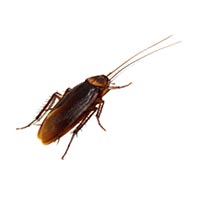
American Roaches
American Roaches, also known as Flying Water Bugs, are large roaches that can grow to 1 ½ inches or more in length and are reddish-brown in color. They prefer moist areas such as the plumbing pipes, drains, and other water sources.
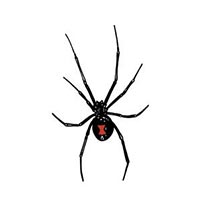
Black Widows
Female Black Widows are larger than the males, and are black with red markings on their abdomens. Male Black Widows are a lighter in color with light streaks on their abdomens. Black Window webs can be identified as an irregular mass of webbing, without the geometric symmetry other spiders usually display in webbing. Black Widows like to place their webs near ground levels such as underneath foundations, boards, and behind shrubs. The Black Widow’s bite is venomous to humans and animals—its venom contains neurotoxins that affect the nervous system. The severity of the poisoning usually depends on the location of the bite and the amount of venom released. In some instances, Black Widow bites can be fatal. If you suspect you, a pet, or someone you know has been bitten by a Black Widow, medical treatment should be sought immediately.
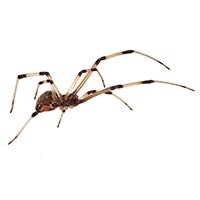
Brown Widows
A relative of the Black Widow, the Brown Widow is a newer problematic spider to Southern California. The Brown Widow is suspected to have originated in either Africa or South America (scientists have not yet agreed where) and became established in Southern California in early 2000. It is mostly found in the urban areas of Los Angeles and San Diego, and can be identified by its dark brown body and tan and black striped legs. Brown Widows like to build their webs in secluded areas or empty containers around homes and businesses such as plant pots, mail boxes, storages, garages, under outdoor furniture, and even under cars. The Brown Widow’s bite is considered less venomous than a Black Widow’s, but there has been at least one report of more severe symptoms that resulted in hospitalization. Caution should also be used with the Brown Widow.
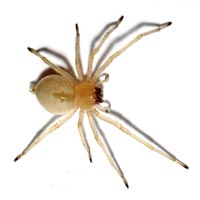
Yellow Sac Spiders
Yellow Sac Spiders are smaller spiders that are pale yellow in color. Their natural habitat is outdoors but they often venture indoors during colder weather. When inside, they are commonly found on walls and ceilings, or hiding in clothes. Yellow Sac Spiders will bite if threatened. Their bites often cause redness, swelling, and itchiness, but are not generally considered particularly venomous. If the bite does not seem to be healing, then medical attention should be sought.
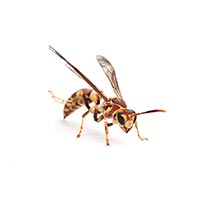
Paper Wasps
Paper Wasps are dark brown with yellow markings and are about 3/4 of an inch to 1 inch long. Paper Wasps get their names from the type of hives they build—their hives look like papery cones. Paper Wasps generally only sting if they feel threatened, but stings from Paper Wasps can be painful and can even cause severe allergic reactions.
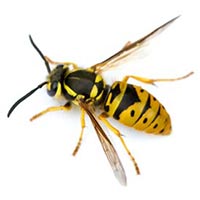
Yellow Jacket Wasps
Yellow Jacket Wasps are the smallest of Wasps at about 1/2 of an inch long with yellow and black markings. Yellow Jackets typically build their nests under or near the ground, such as under porches, steps, animal burrows, or tree bases. Yellow Jackets are aggressive defenders of their hives and each Yellow Jacket can sting multiple times. Like the Paper Wasp, the Yellow Jacket’s sting can be quite painful and can also cause severe allergic reactions.
